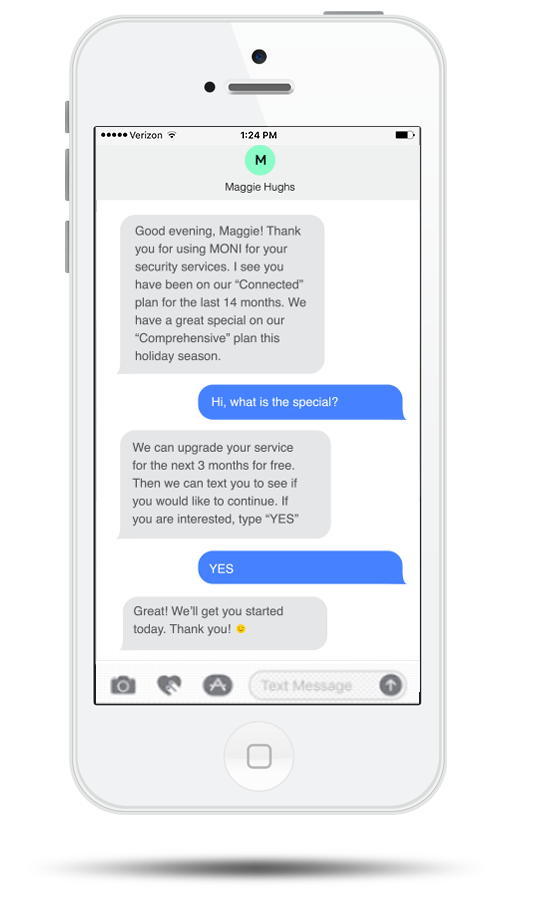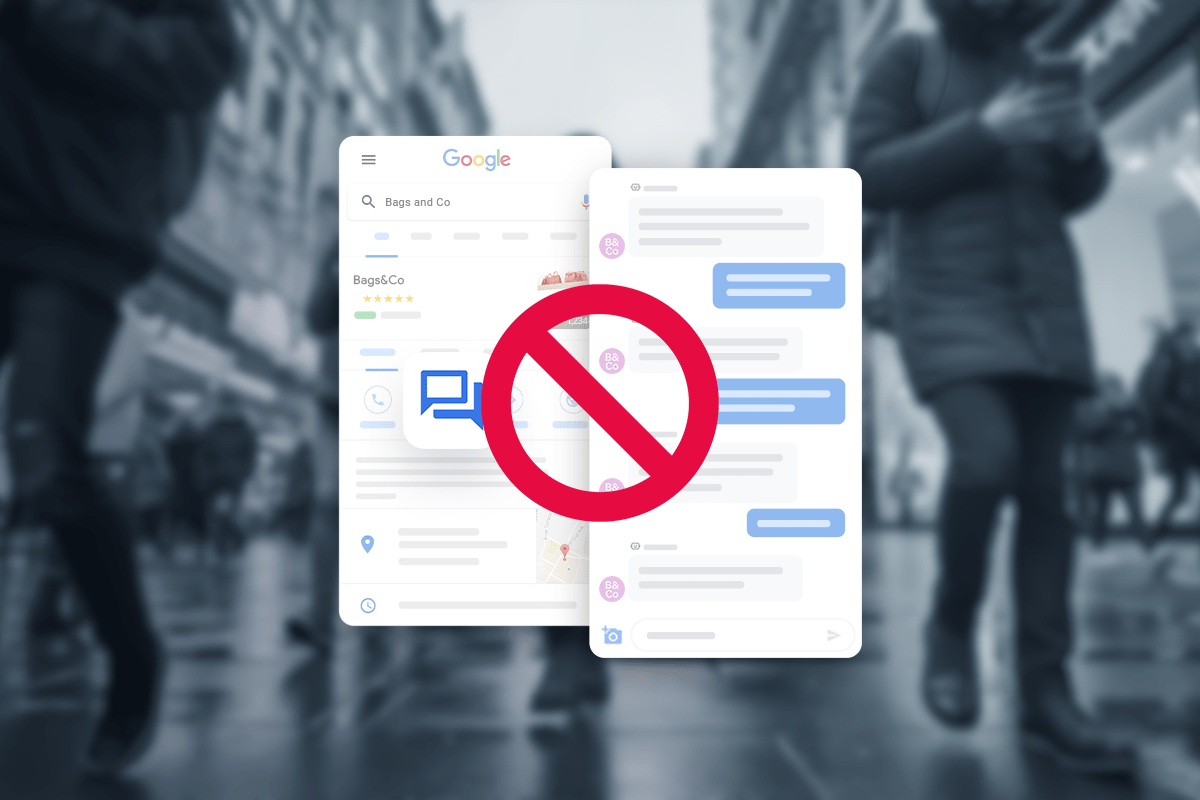When customer service is at its busiest, it might be time to get back to the basics: Your team’s ability to effectively communicate with customers.
Customer service teams are overwhelmed during this time of year, and shoppers are getting more frantic as the holidays grow closer. Unfortunately, this is when basic customer communication standards can go out the window.
What does customer communication entail? A lot more than you might think. From error messages and initiating returns with customer service to marketing emails and social media, it’s all a part of the customer experience.
But it’s essential to your customer service team. Continue reading to learn how to improve your teams’ customer communications.
Why is customer communication important?
Customer service often boils down to how you make a customer feel. Solving customer problems, listening to complaints, providing answers… it’s all worth more than the sum of its parts.
This customer experience often has a direct impact on sales. It affects loyalty, how likely customers are to recommend your brand and more.
According to a 2020 XM Institute report, emotion has the largest impact on loyalty behaviors (purchasing more, recommending, forgiving, and trusting). Respondents who gave a high emotion rating were 90% more likely to purchase more and recommend the company to others. 74% were also more likely to forgive the company after a bad experience.
Creating positive emotions has a high impact on customer retention, but negative emotions have the opposite effect. According to the Zendesk Customer Experience Trends report, 50% of customers are likely to switch to a competitor after one bad experience. That number jumps to 80% after two.
Learning to communicate with customers effectively is a vital part of your business’s success.
Start with simple communication skills
In our effort to move quickly and stay up to date with the latest technology, we lose some basic customer service principles.
No matter how you interact with customers, there are a few simple tenets and strategies to follow.
1. Employ active listening techniques when you communicate with customers
Are you ever sharing a conversation with someone, and you can’t tell if they’re actually listening? Even if they are? That’s likely because they’re not showing you that they hear what you’re saying and are taking it in. This technique looks different over different channels but can be used no matter how you’re talking with customers.
- In-person: Nod when appropriate. Smile or show concern based on the conversation, and make eye contact throughout the discussion.
- Over the phone: When you can’t make gestures to show you’re listening, give the person on the other end auditory cues. Use phrases like “I understand,” or try repeating back what they just said.
- Over messaging: This can be a little trickier with asynchronous messaging. Customers that employ messaging to resolve a problem often want it solved quickly without much conversation. In this scenario, the best way to show you’re listening is by responding quickly and addressing the problem head-on.
2. Mirror your customer’s communication style
A great way to connect quickly with your customer is with mirroring. This is another technique that works well in person but can also be used to connect with your customer through other channels. It relies on empathy and your ability to gauge how your customer wants to interact.
- In-person: Rely on body language and facial expressions to tell you how your customer is feeling. Are they fidgety and in a hurry? Relaxed and looking for some small talk? Show your customer you understand them by taking their visual cues and using them to determine whether to give quick, to-the-point answers or spend time chatting about the weather. You can also mirror body language as a way to connect with your customer—just don’t go too overboard. You don’t want to make them feel uncomfortable.

- Over the phone: Take your cues from the tone of their voice. If they’re leisurely answering your initial questions (and peppering in some jokes), but you try to rush them through the conversation, that’ll leave them feeling unsatisfied.
- Over messaging: Are they writing formally or using shorthand and emojis? Try to match your tone to theirs. Find a balance between the brand communication style and your customers’ to make the strongest connection.
3. Show patience
Practicing patience is tough over the holidays. Everyone’s stressed. Lines are long. And there’s only a short time to get everything done. For your customer service representatives, this is when it’s often the most difficult and most important time of year for patience.
Whether customers are coming to you angry and upset or coming to you confused and in need of direction, it’s important to show understanding. Don’t interrupt, and wait until they’ve completed their thought before jumping in with the solution. Patience will help you solve your customers’ problems and win them over time and time again.
4. Practice conflict resolution
Many customer service teams undergo group conflict resolution training, and we certainly recommend it. Working with angry customers is tough on your team and can lead to burnout if not managed properly.
The best way to solve a conflict is to stay calm, validate your customer’s feelings and work toward a solution. This is an oversimplification, but practice helps. Your team will feel more prepared for when it happens, and they’ll know how you want them to handle it.
Employing these basic communication skills effectively during every customer interaction will go a long way in building brand loyalty and elevating the customer experience.
Get proactive with outbound communications
Many businesses think customer service involves waiting around until customers come to them with a problem. The problem with this type of reactive service? Customers are already facing an issue when they come to your team. They may be agitated, upset, disappointed, and filled with tons of other unpleasant emotions by the time they ask for help. Not only does this make your customers more difficult to communicate with, but it also creates a poor impression of your brand that can have long-lasting effects.
Instead, get proactive with your customer service by using outbound communications. 
Getting in front of a customer service issue before it happens can be as straightforward or as complex as your business dictates.
Here are some examples of how you can solve a customer’s problem before it happens:
- Software-as-a-service products can include helpful tips to direct customers on how to use the product.
- E-commerce retailers can send an SMS message with a track-my-package link to reduce inbound “Where’s my order?” calls.
- An online business can send out a notification for planned website maintenance.
And customers appreciate proactive service. 63% of surveyed US consumers have a more favorable view of brands that offer proactive customer service notifications, according to a 2019 Microsoft survey.
Communicating early and often with customers is a great way to get ahead of customer service issues and leave a lasting impression.
Empower your agents to communicate with customers
Since your customer service agents are at the frontline of customer communications, it’s important to empower them with everything they need to be successful when they communicate with customers.
- Ensure easy access to product knowledge: In Microsoft’s 2019 survey, 35% of people stated that a service agent’s lack of knowledge was the most frustrating aspect of a poor customer service experience. Make sure your team knows your products, services, and policies inside-out so they can answer customers’ questions fully and resolve issues in one interaction.
- Give them the right tools: The same Microsoft survey said 32% of customers stated having to repeat information was the most frustrating impact of a poor customer service experience. Integrate messaging tools into your current customer relationship management service to give your customer service team access to information. Agents will be able to access customer information quickly to solve problems faster, with fewer inconveniences to your customers.
- Embrace their changing roles: The role of your customer service team is changing. The idea of a call center complete with a phone bank full of agents is outdated. Now, chatbots answer simple questions and route customer issues to the right agent.
Your support team now can spend more time solving complex customer issues and even engaging in pre-purchase support and upsells. It’s important to recognize this shift and set new expectations for this role now and in the future.
Build a culture of effective customer communication
What’s the most important thing to remember? No, it’s not that the customer is always right. It’s that the customer is always heard.
Your customer service team is the frontline of customer interactions with your brand. It’s vital that you set expectations and give your team the tools to meet them.
Power your customer service team with Quiq
Ensure your team communicates effectively over any messaging channel with Quiq. Our AI-enhanced conversational platform supports your customer service team with multiple messaging channels, chatbots, CRM integrations, and more.




